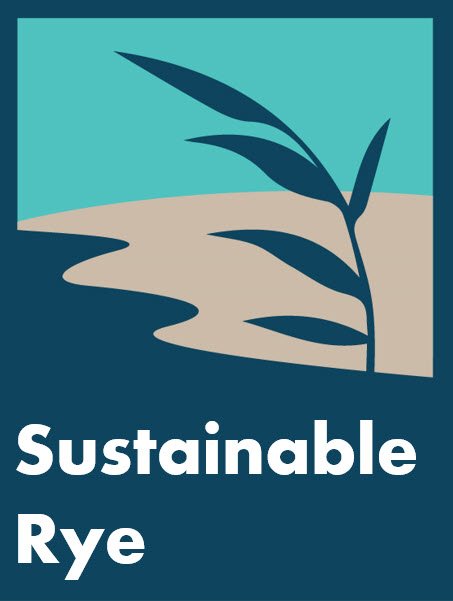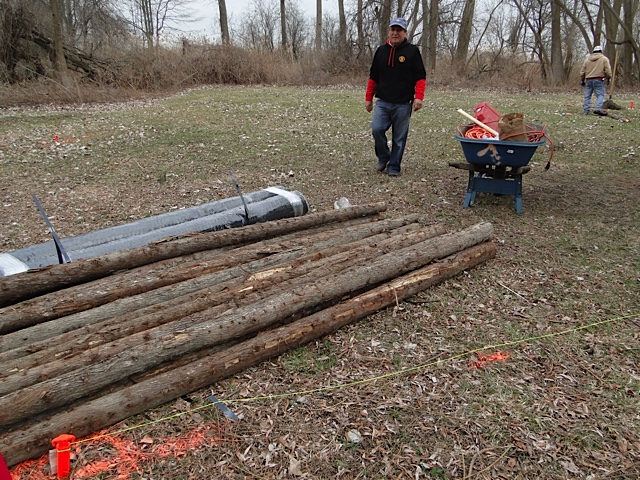
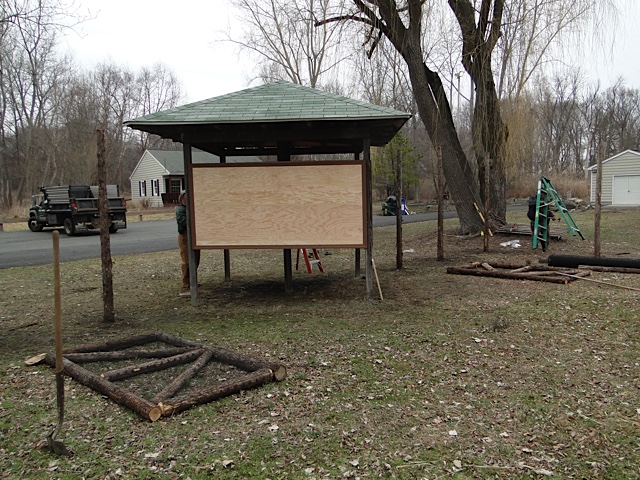
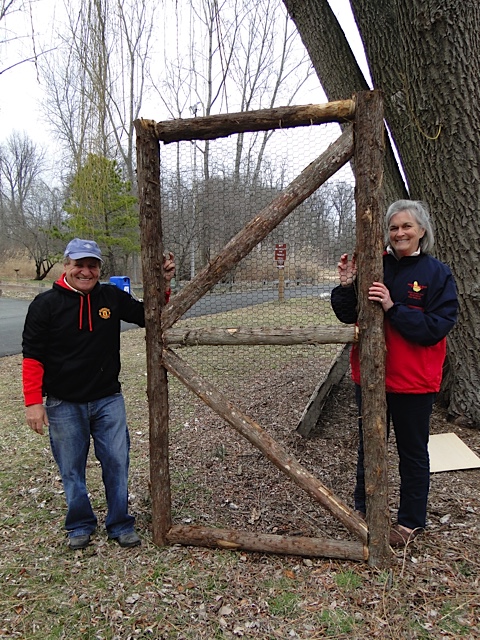
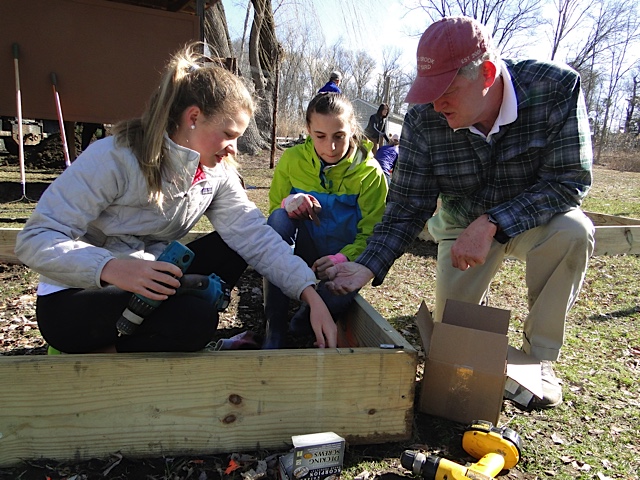
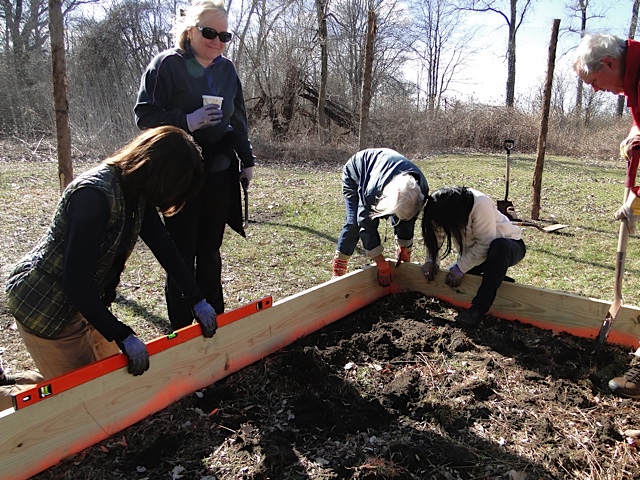
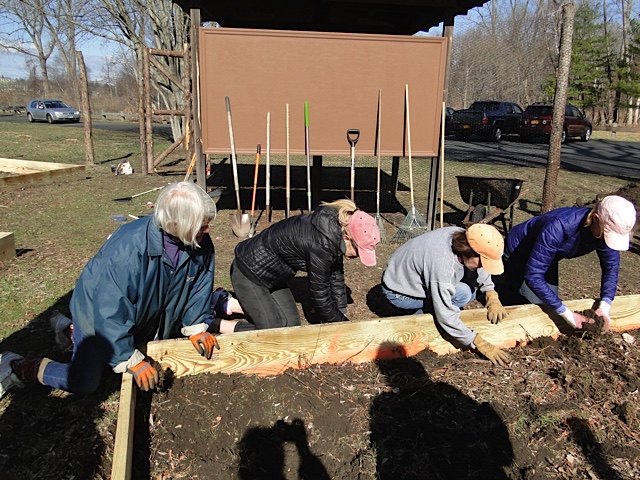
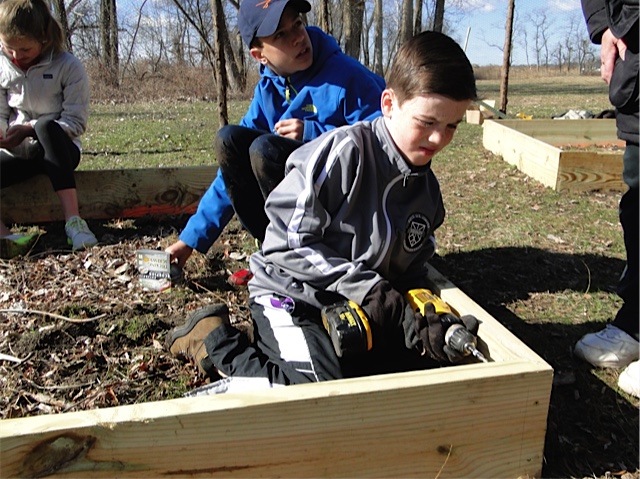

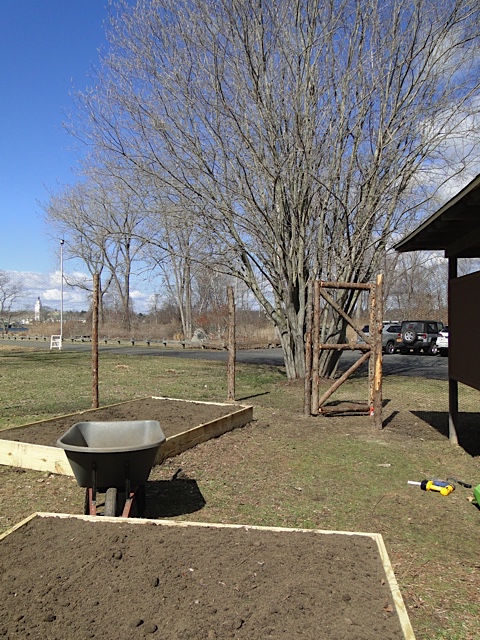
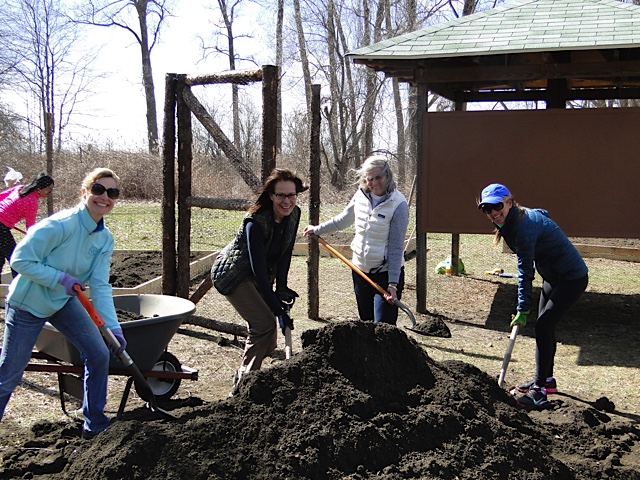
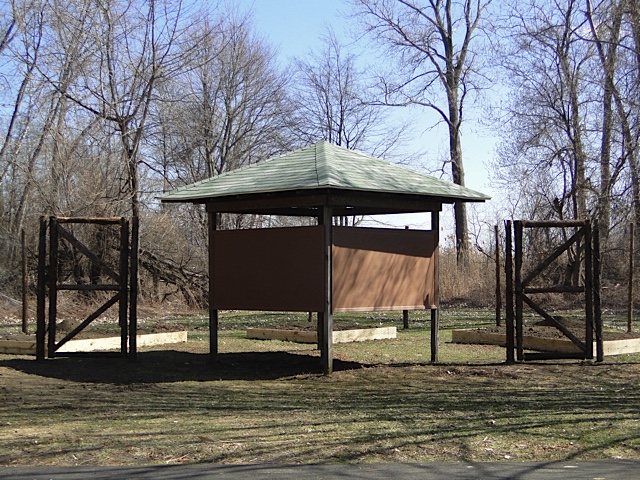


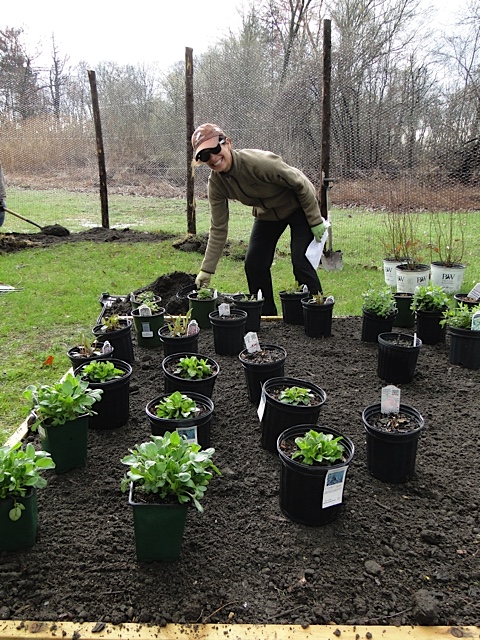
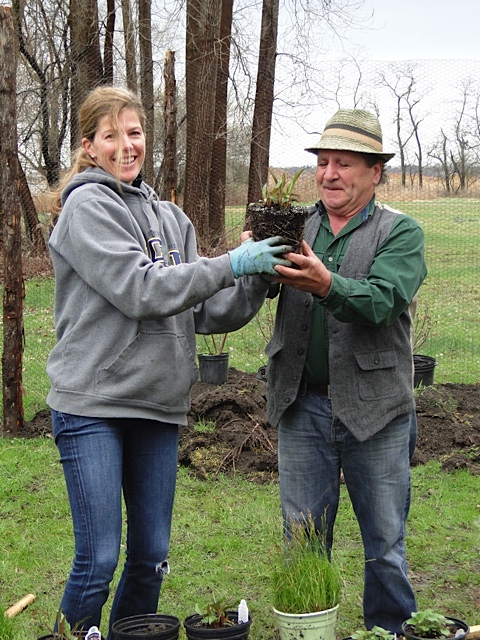

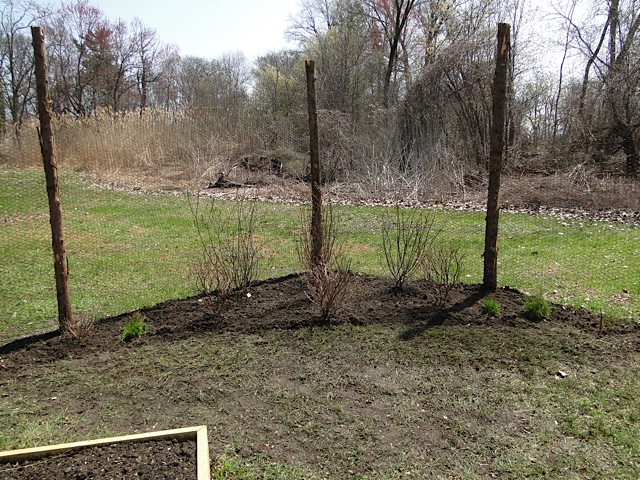
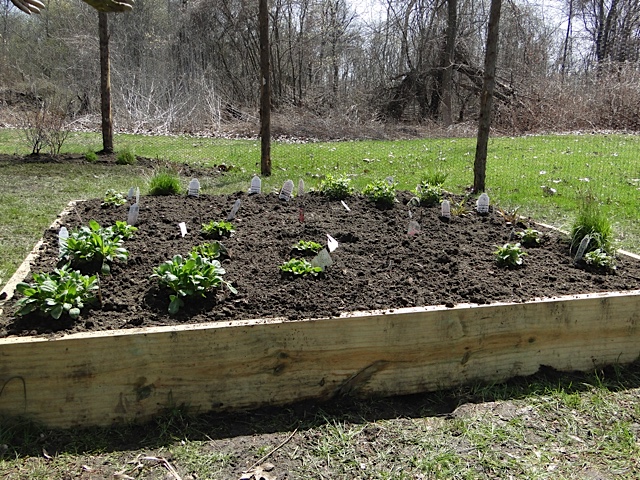
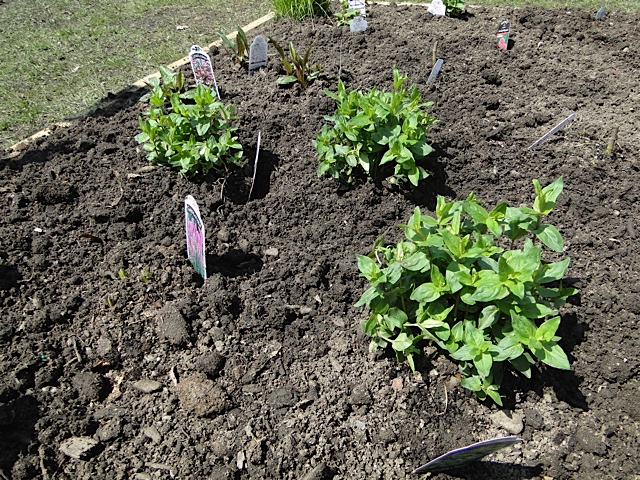

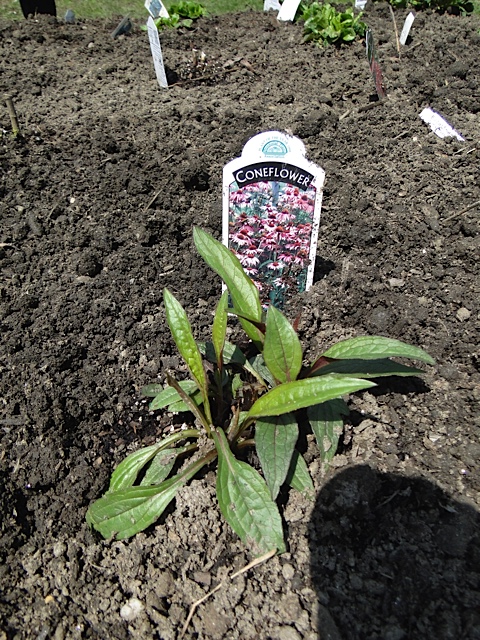



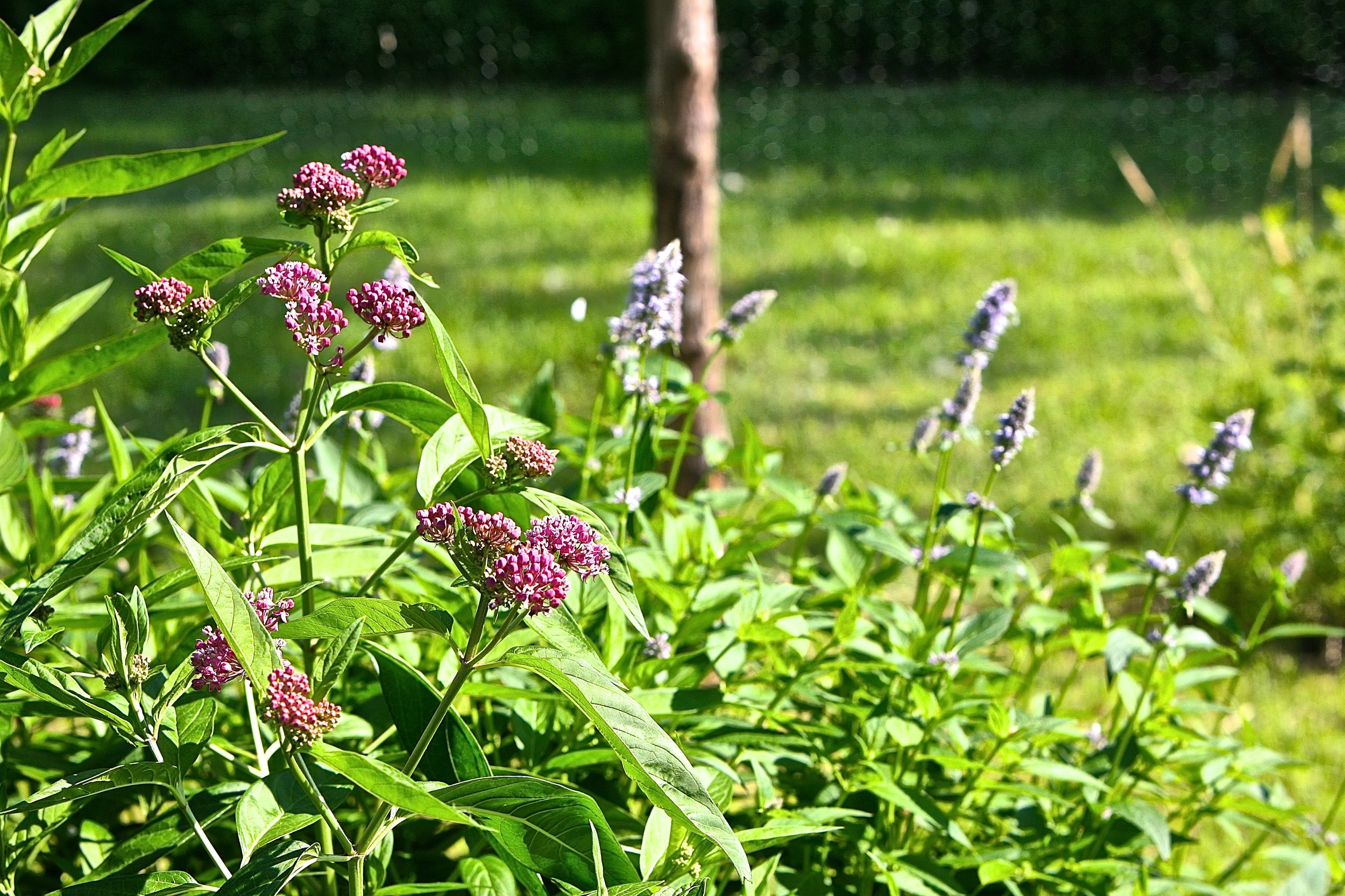




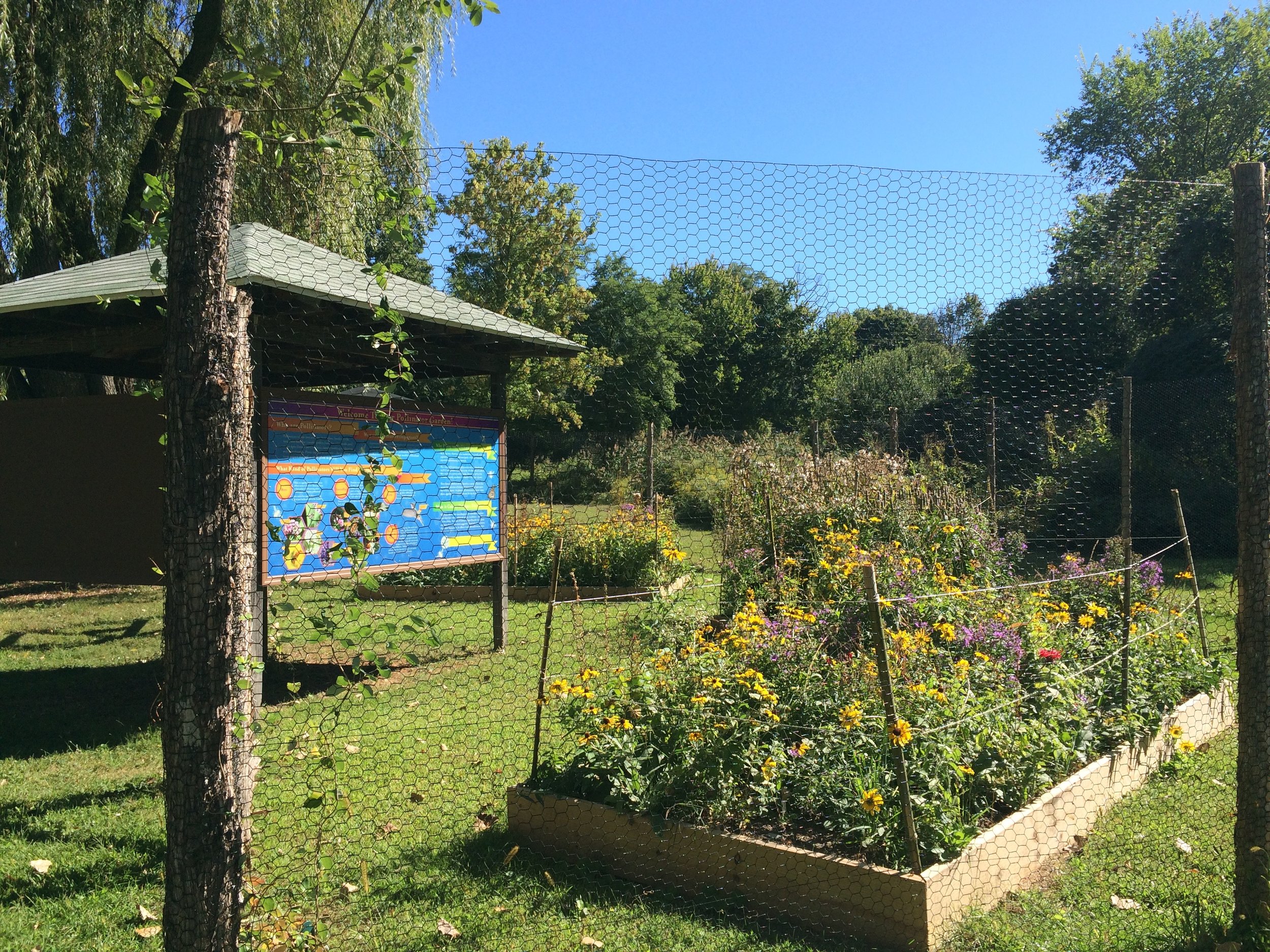



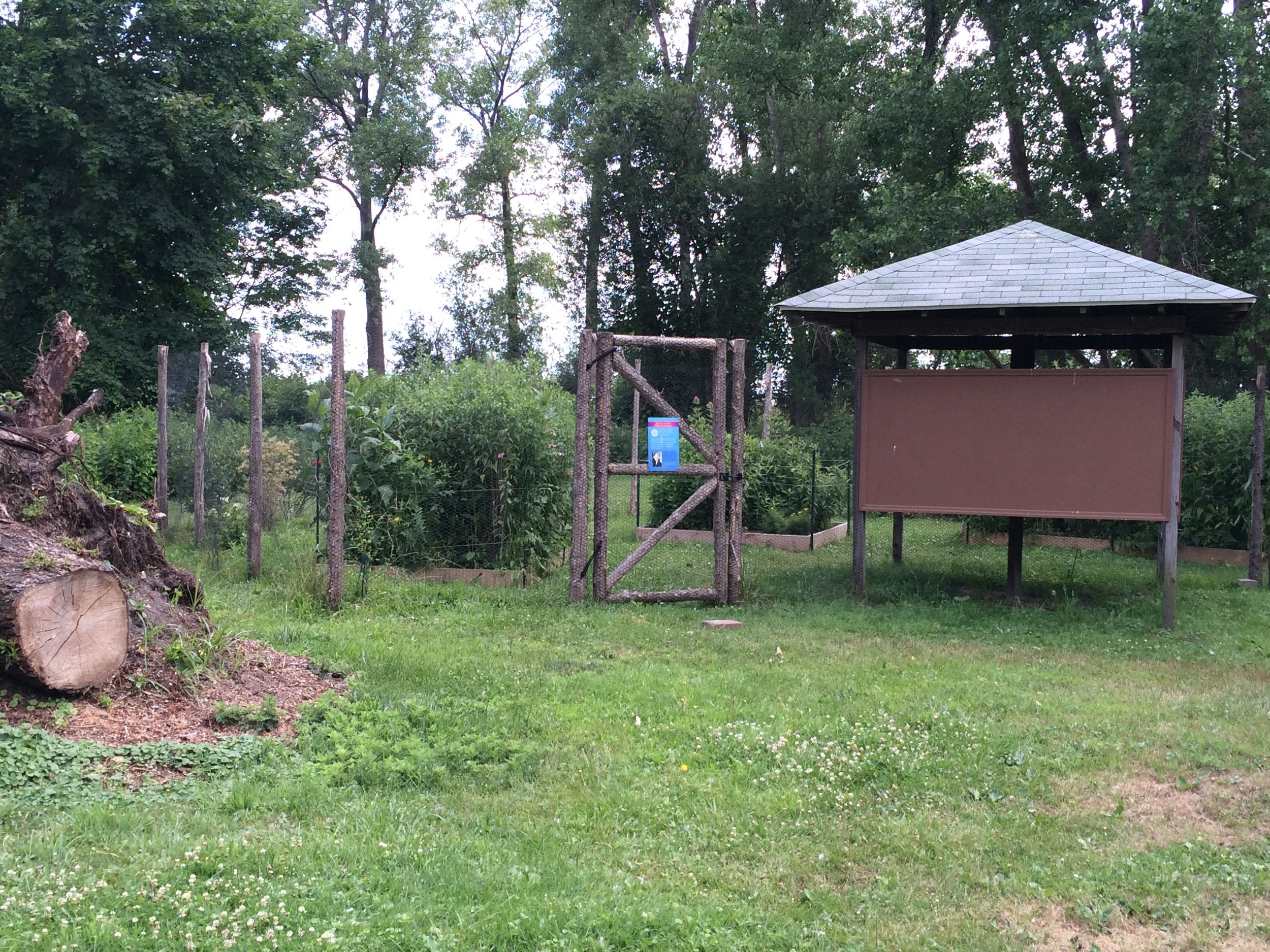

Sustainability in Our Community:
Rye Garden Club
Did you know that seven species of bees were placed under the protection of the Endangered Species Act for the first time? You may have read about the declining bee population in the U.S., but pollinators as a group are in peril. In the last few decades, bee and butterfly pollinator populations of some species have plummeted. It has been difficult to pinpoint the exact cause of the decline, but evidence points to a number of stressors, including loss of natural habitat, diseases, loss of genetic diversity, and exposure to certain pesticides.
The Pollinator Garden welcome sign
In April 2015, the Rye Garden Club, in honor of the Club's centennial anniversary, donated a pollinator garden to Edith G. Read Wildlife Sanctuary. RGC members designed the garden layout, selected appropriate pollinator-friendly native plants and helped construct and install the garden. In addition, RGC created informational panels for the kiosk next to the garden. After touring the garden, visitors can read about why pollinators are so important and learn how to build their own garden.
“The goals of the garden are to provide habitat and food for pollinators and to educate visitors on the importance of pollinators and planting native plants to support pollinators.”
Rye Sustainability Committee will cover more in future posts about the importance of pollinators, so stay tuned. In the meantime, visit Edith Read and check out the Rye Garden Club Pollinator Garden. Although its past peak season, you'll be able to read the information boards and start planning your own pollinator garden!
Visit RGC's website for more photos, a PDF of the signage, a general list of pollinator-friendly native plants, and a list of all the native plants, including photos, used in the garden.
Visitors enjoying the Pollinator Garden
Learn more about how you can create a healthy yard by visiting our Rye Healthy Yard and Resources Section. And ...
Take the RHYP Pledge!
